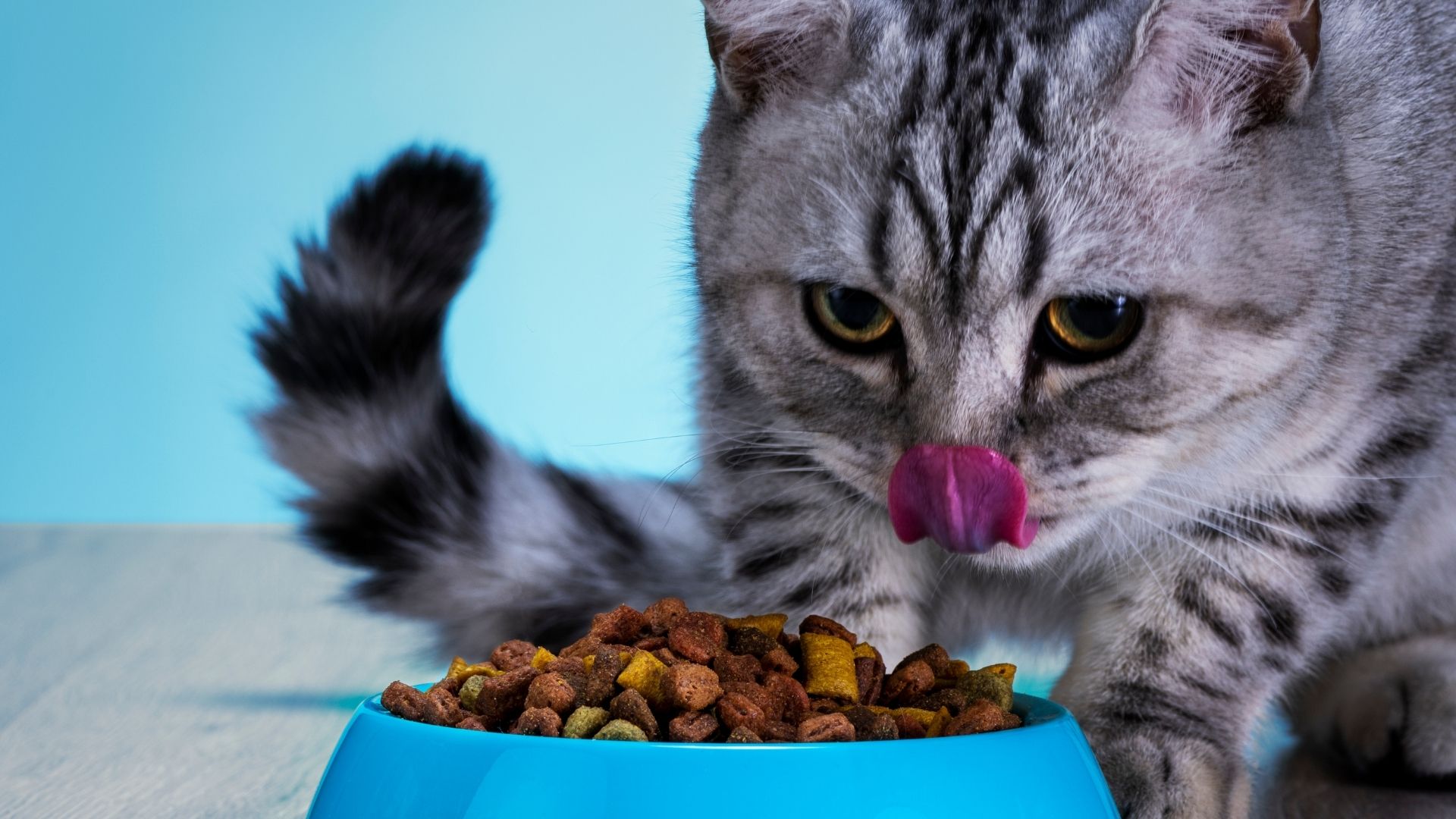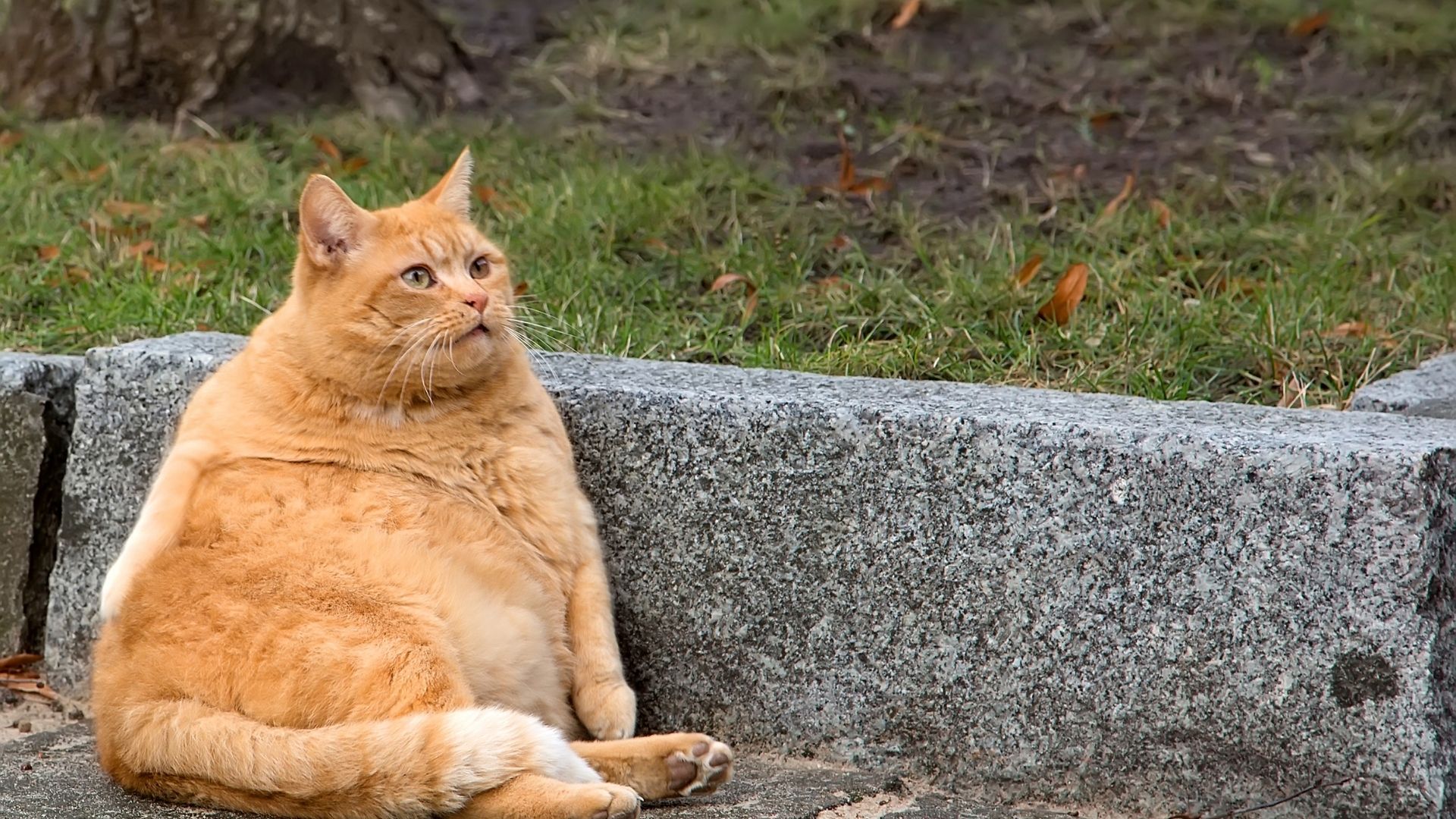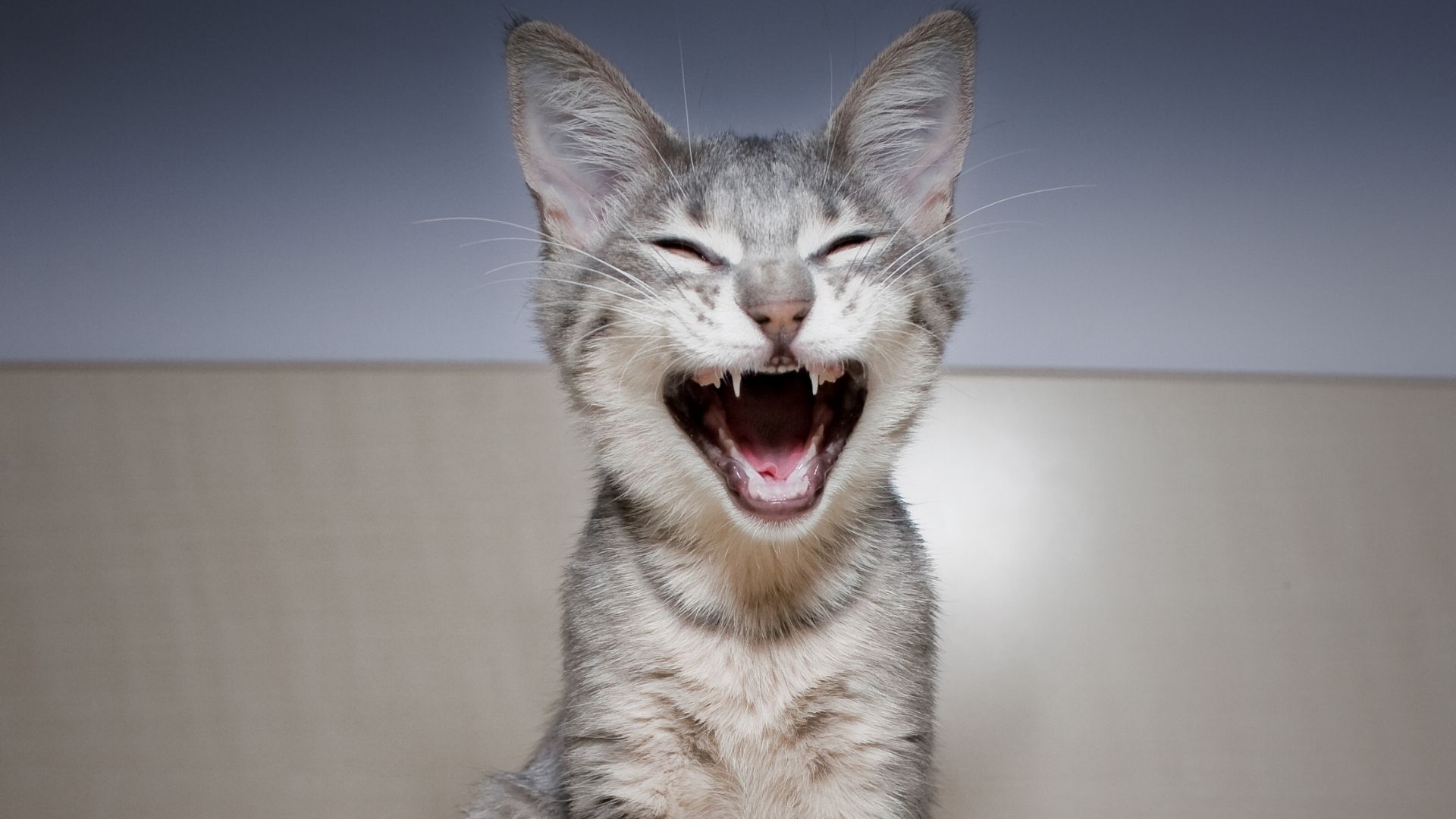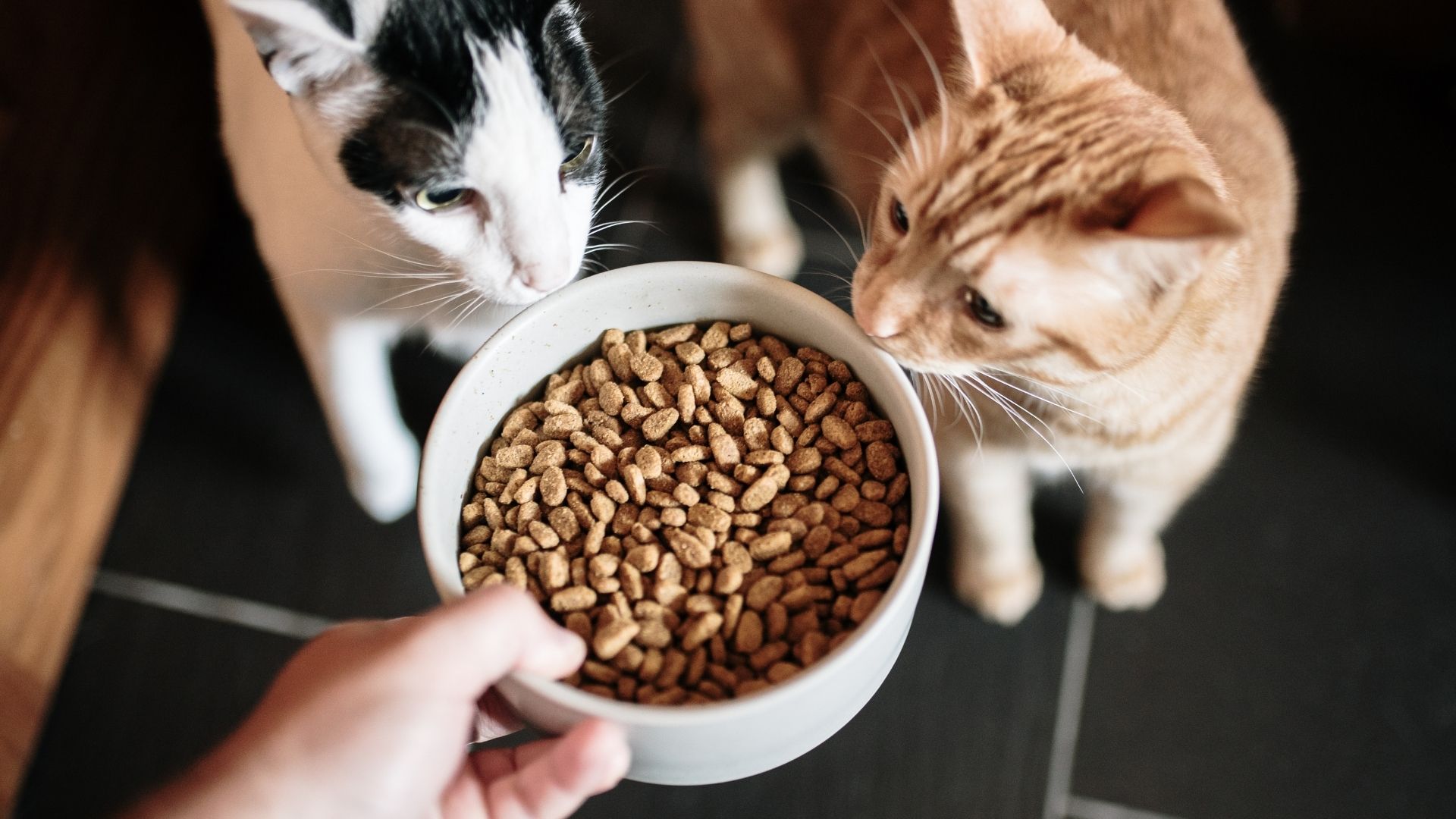How often should you feed your cat?
Feeding your cat is an essential part of caring for your pet. Cats are obligate carnivores, meaning they need to eat meat to thrive. A healthy cat needs a balanced diet of protein and fat.
This article will look at how frequently you should feed your cat, different factors to consider before setting up a meal plan, and the difference between wet and dry cat food.
How much food should a cat eat per day?

It is generally recommended that you feed Malaysia-and-how-to-protect-your-pet-with-insurance">Your cat at least twice a day, with wet food mixed into one or both meals. This, however, may vary depending on the cat's age and other factors.
Most cats are unable to regulate the amount of food they consume. As a result, developing a meal plan or schedule is essential in cat feeding. Regular feeding schedules can also help you keep track of your cat's eating habits and spot problems early.
If you have more than one cat, each one should have its own meal plan and feeding schedule to meet its nutritional needs. For more accurate portion sizes, veterinarians typically recommend that owners measure cat food using a weighing scale.
If you don't have a weighing scale, cup measurers work just as well.
As a cat owner, you must plan their meals around your schedule (unless you get an automatic cat feeder that can dispense food at fixed times).

Cats can go 8-10 hours between meals. More than 12 hours between meals should be avoided because it increases the acidity of the cat's stomach, which can cause discomfort.
It's important to stick to a schedule once you've found one that works for you and your cat. It's best to feed them once before you leave for the day and once in the evening after you get home.
Alternatively, you can feed your cat earlier in the afternoon and once right before bedtime if you're home during those hours.
What are the factors to consider?
Before creating a feeding schedule for your cats, it’s important to consider the following factors:
Cat’s age

Kittens under the age of six months require more nutrient-dense food at a higher frequency (up to four times) throughout the day, whereas kittens over six months can reduce their meal frequency to three times per day.
Kittens should be fed milk exclusively until they reach the age of 16 weeks. After that, soft, wet foods can be introduced into their diet.
At 10 months, owners should typically switch their kitten's food to adult cat food and reduce feeding frequency to twice daily.
On the other hand, because senior cats are likely to be less active, a single meal per day should suffice if they are healthy and free of illnesses.
Weight of the cat
Cats with a healthy weight should be fed twice a day. However, obese cats should have their diet monitored and be fed in a calorie deficit.
We all love "chonky" pets, and they're great to cuddle. But keep in mind that if your pets are obese, they're more likely to develop illnesses like diabetes, liver disease and skin conditions. Obesity can also directly shorten their lifespan.

According to a survey conducted by the Association for Pet Obesity Prevention in the United States, more than 60% of cats were obese or overweight. It is common for a cat to be overfed in Malaysia because owners do not adhere to a strict feeding schedule or give their pets excessive treats.
Obesity is more common in neutered pets and usually develops early in life. You can use an online calculator to determine your pets' recommended daily calorie intake.
However, it is not always accurate. It is always best to consult with your veterinarian about the type, size, and frequency of meals for your pets.
Cat breed
Malaysian house cats are typically larger breeds such as the Maine Coon, British shorthair, and Ragdoll.
More food is required to satisfy the hunger of larger breeds. Smaller or "petite" breeds, such as the Siamese and Persian, do not require as much food as larger breeds.
Energy level

If you notice your cat is very active and regularly runs around, they will typically require more food because they burn more calories than a cat who is usually lazing or is not as active.
Indoor vs outdoor
Indoor cats typically require fewer calories in their meals compared to outdoor cats. This is because outdoor cats are more likely to roam and actively walk around, which burns more calories.
Reproductive status of the cat
It's best to increase the size and frequency of your cat's meals if it's pregnant or nursing. This is because pregnant or nursing cats require more calories, which owners cannot estimate accurately.
It would be even better if "free feeding" was practised. Free feeding would require a bowl of dry food would be left out for the cat at all times.
Wet food vs dry food?
The main distinction between the two foods is the amount of water in each. As previously stated, it is best if your cat's dry food (also known as kibbles) is served with some wet food. This, however, is not required.
Dry food typically contains about 10% water, and the rest is dry matter such as carbohydrates, vitamins, and fats. Wet food contains significantly more water than dry matter (approximately 70%).

Wet food
Wet food contains more water, which helps keep your cat hydrated, and it is also more palatable for cats due to the taste. Wet food cans or pouches that are not consumed within 24 hours risk being contaminated.
Refrigerating wet food may extend its shelf life once opened, but it is best consumed within a day or two. Wet food is also the more expensive option. Wet food may not suit your lifestyle if you are on a tight budget.
Dry food
Dry food, on the other hand, dry food is less expensive and lasts longer. It is also suitable for use in automatic feeders. Cats that mostly eat dry food have better dental hygiene and less tartar on their teeth.
The disadvantage is that kibbles can be dehydrating for cats if given alone. If you only feed your cat dry food, it is important that the cat is properly hydrated.

You may be able to reap the benefits of both diets by combining them or giving wet food at one feeding time and dry at the other.
Recommended calorie intake for your cats
If you want to mix wet and dry cat food, talk to your vet about the best balance. Your veterinarian can advise you on how much food to feed your cat and how to divide the two food options.
Here is a general table that shows the recommended calorie intake for your cats based on their weight.

Conclusion
When it comes to cat feeding, there is no one-size-fits-all solution.
Experiment with feeding schedules and food types to find the best way to feed your cats. Regular veterinarian consultations are great to have as well. Good luck :)

















